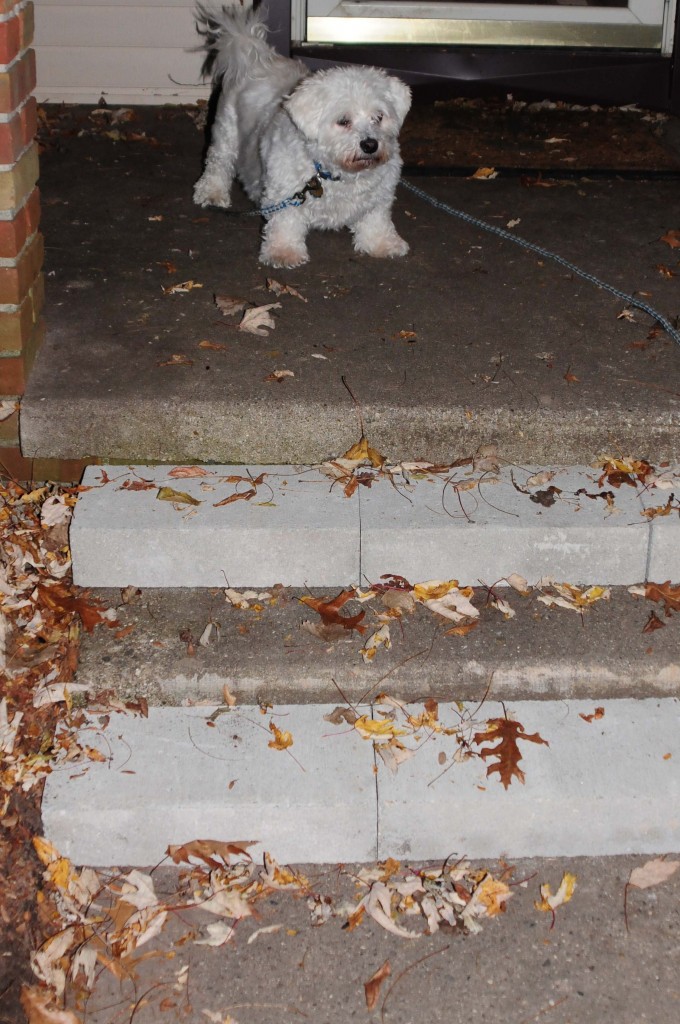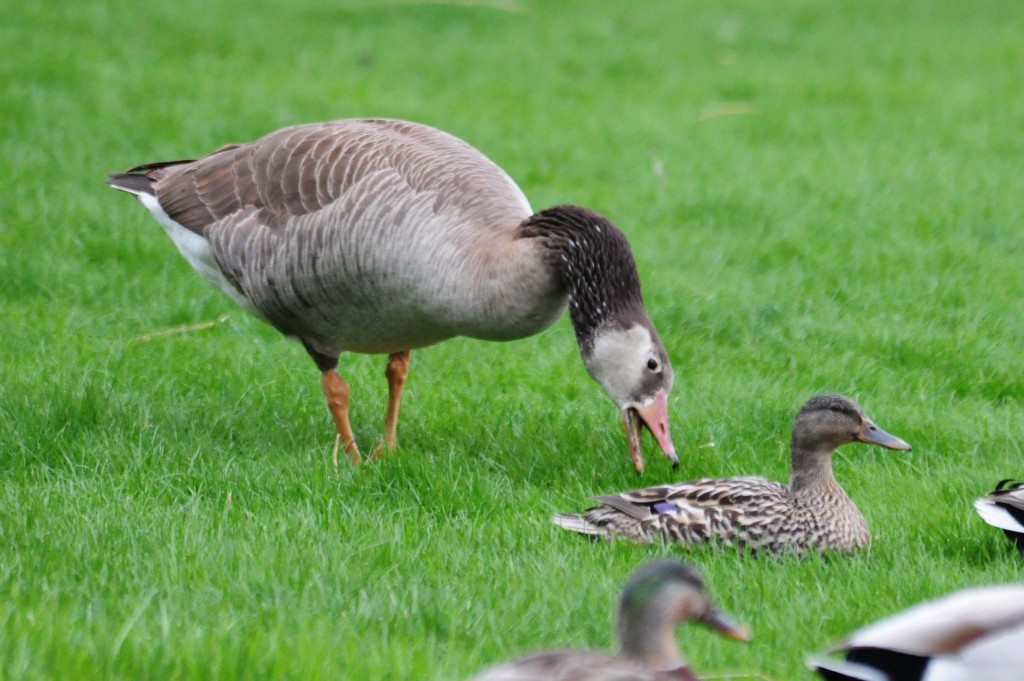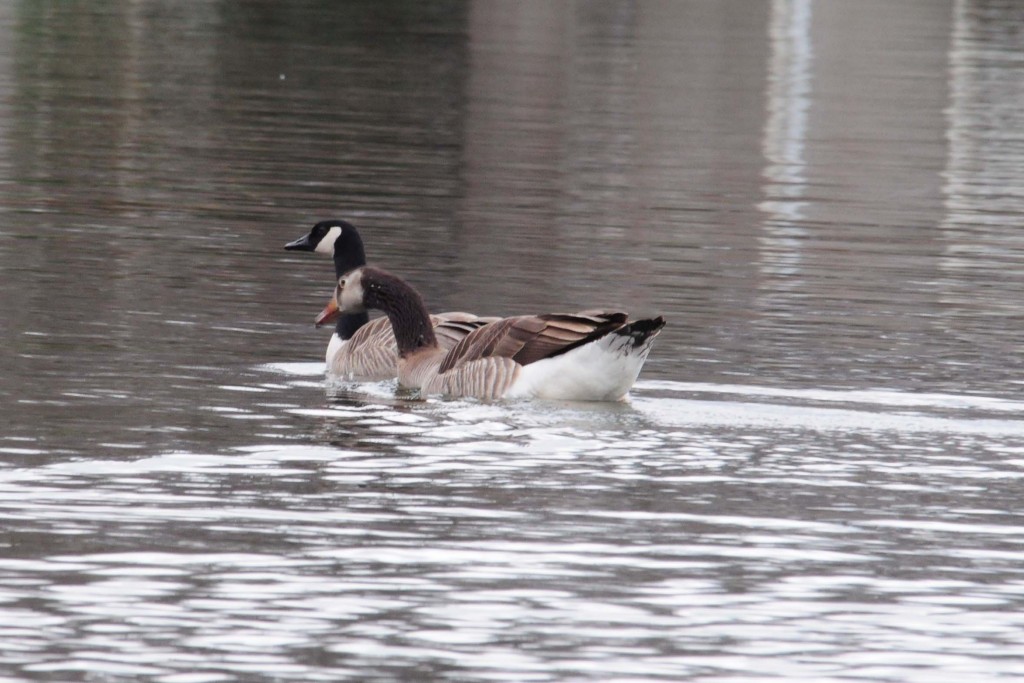On Sunday Mark and I spent quality time with the four kids and some significant others munching on some delicious DeLuca’s pizza and drinking beer in honor of Kid #2’s birthday. We made up for having fun by spending quality time in Home Depot on Sunday debating how to make smaller steps for Dusty, our 13-year-old dog whose short legs and chubby tummy have made it difficult for him to get up and down big steps. We debated several designs, moved way too many sizes of concrete brick in and out and back in and out of Mark’s car, until finally settling on some lame setup that Dusty did not like at all.
As a result of all our fun, it wasn’t until fairly late in the day Sunday that I was able to get out to take any photos of the migrating birds. I hadn’t seen golden-eyes on our lake before and was quite thrilled to see the ones below even though they didn’t come close enough for a good photo.

I also got to see hooded mergansers on our lake for the first time on Sunday. They were hanging out with the golden-eyes and didn’t come in close, either.
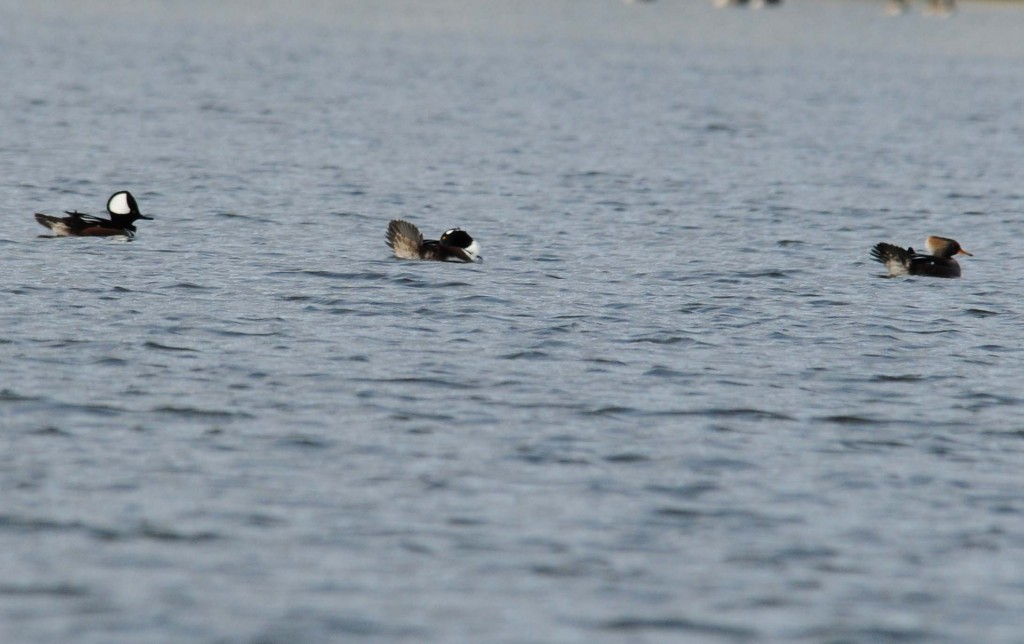
The coots came in close, though, so I got a decent photo of one of them. Kind of a cute coot if you ask me.
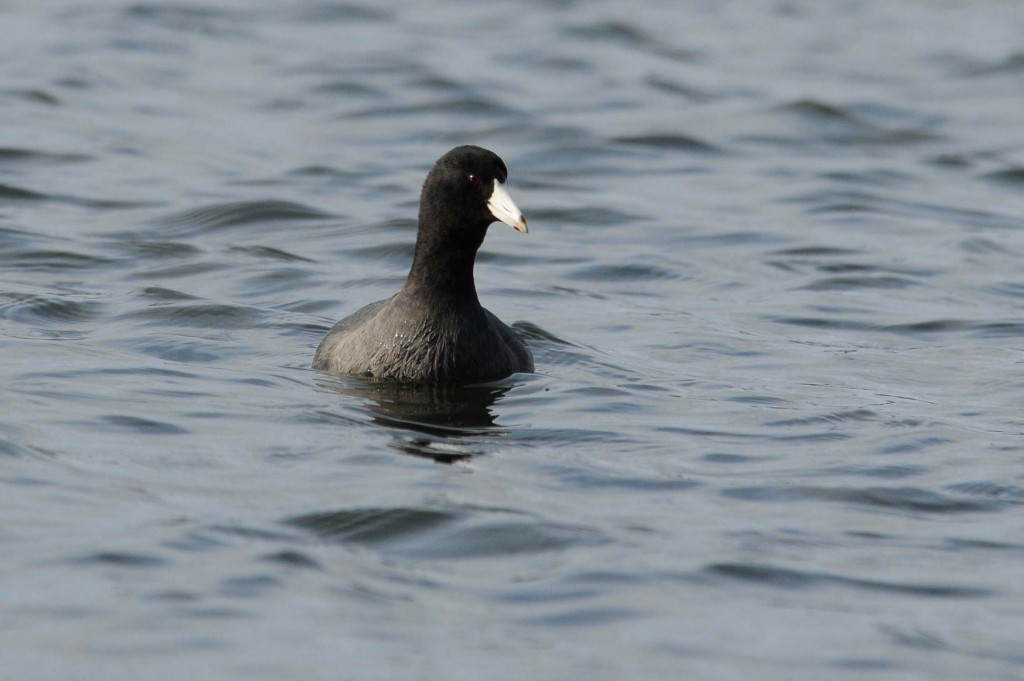
I was also lucky enough to see this grebe as the sun was setting.
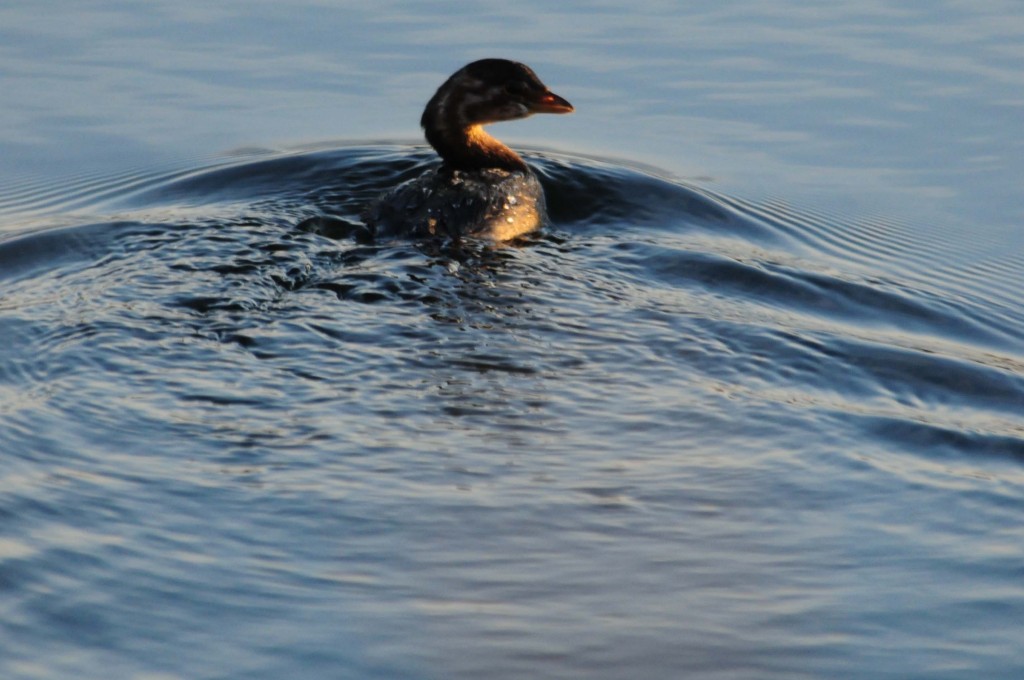
And this ruddy duck, which in the dim light looked more black than ruddy to me.
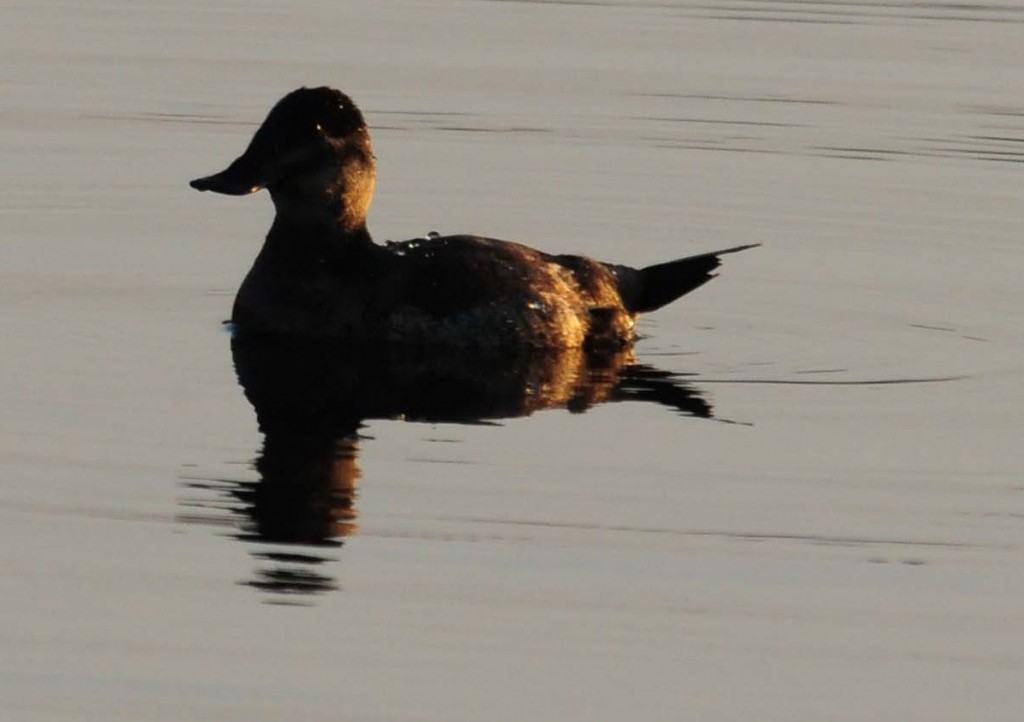
But what really got me excited was the goose I saw. You might remember seeing this odd-looking goose in one of my spring blog postings. This is the one I accused of being a duck-eating goose but which was, in fact, just eating grass like every other goose.
And you might also remember that shortly after I shot the above photo, I shot a photo of the graylag goose hooked up with a Canada goose. And what was nifty about this siting is that the graylag is an Old World goose, meaning it’s usually found in like Europe, Africa and Asia.
So imagine my surprise when amongst a flock of geese Sunday evening after sundown, I heard the odd honking sound of a graylag goose and saw the pair, below.
It was a quite dark and the couple was not willing to answer whether they were the same ones I saw in the spring. But I found it rather nifty to have seen a Graylag-Canada pair this weekend, en route to wherever it is they spend their winters.
